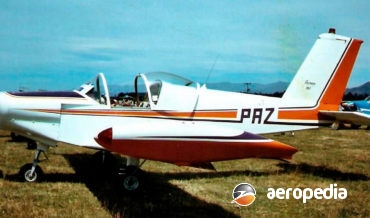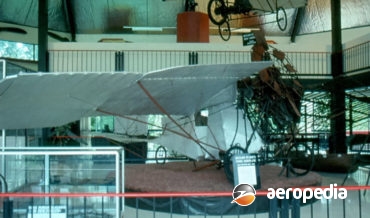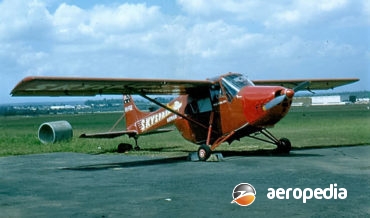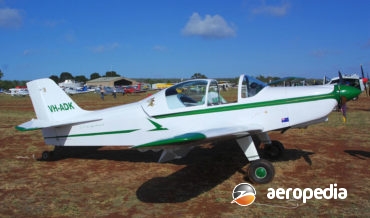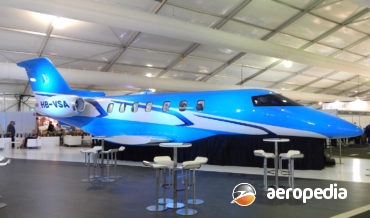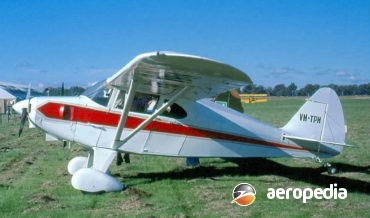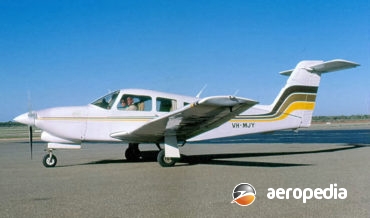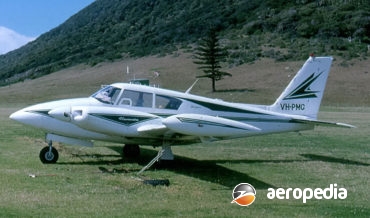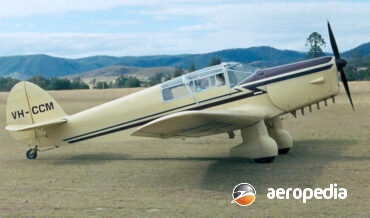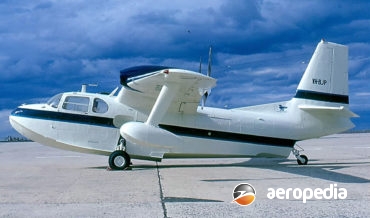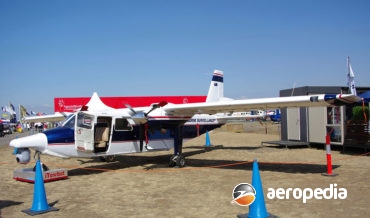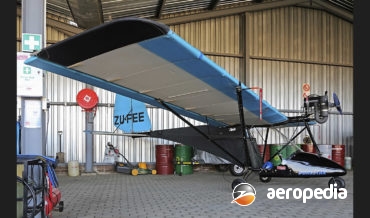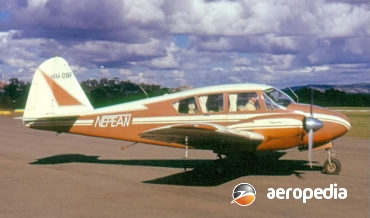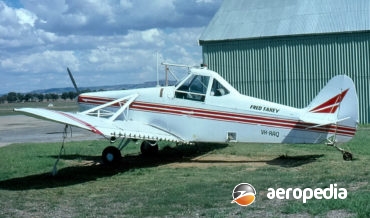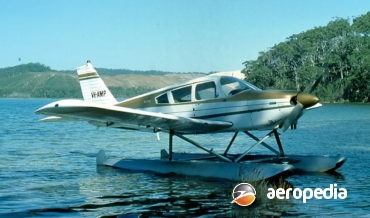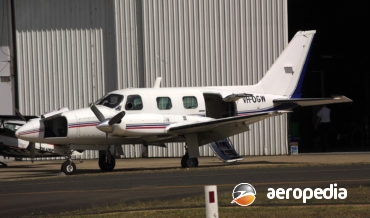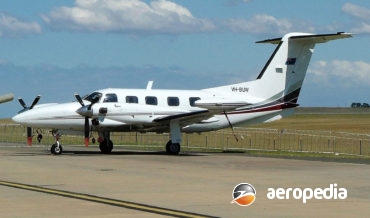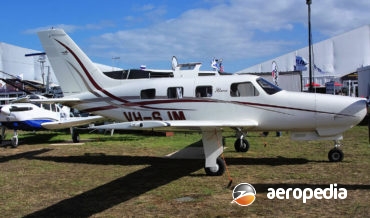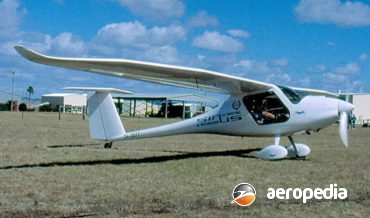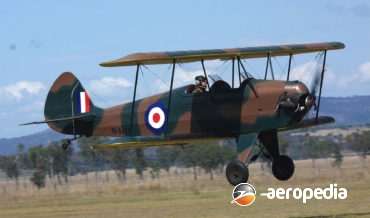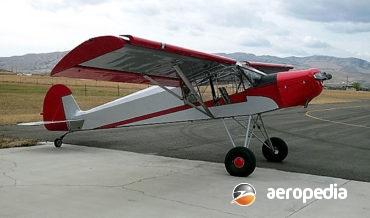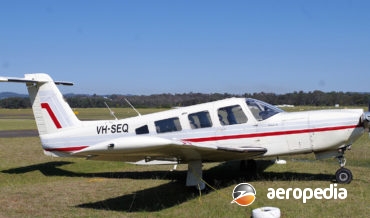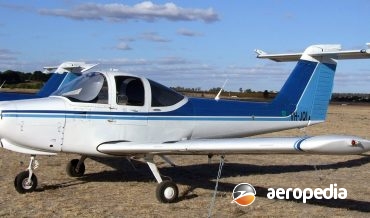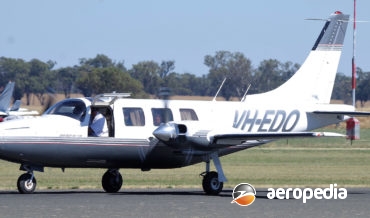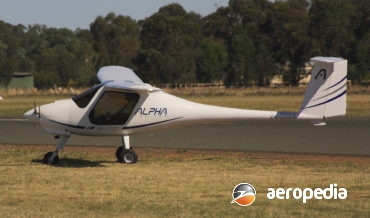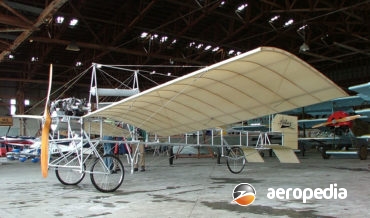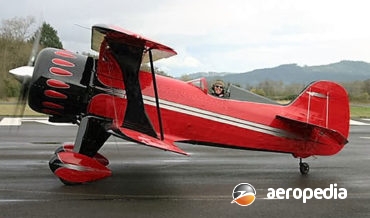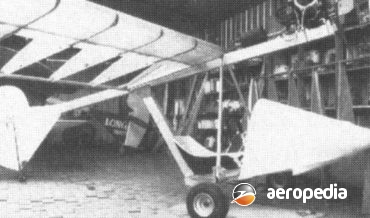David C. Eyre
The Pazmany PL-1, known as the Laminar for its laminar flow wing, was designed by Ladislao Pazmany for the home-built aircraft market, the prototype flying for the first time on 23 March 1962.
David C. Eyre
- May 8, 2019
Richard Pearse was one of New Zealands pioneering aviators, designing and building aircraft on his property at Waitohi on the South Island
David C. Eyre
- May 8, 2019
On 21 December 1955 the prototype Percival EP-9 was flown for the first time by the aircraft’s designer, and founder of the company, Mr Edgar W Percival, an Australian-born designer and builder of several very successful aircraft.
David C. Eyre
- May 8, 2019
Edgar Wikner Percival was born in Albury, NSW, in 1897 and died in 1984 at the age of 86 years.
David C. Eyre
- May 8, 2019
The Piaggio P.148 was designed by Giovani Casiraghi for Piaggio in Italy as a two-seat training aircraft, the prototype flying for the first time on 12 February 1951.
David C. Eyre
- May 8, 2019
Designed in France by M Claude Piel, the prototype of the Emeraude (Emerald) series, known as the CP-30, was flown for the first time in 1952 powered by a 48-kw (65-hp) Continental engine.
David C. Eyre
- May 8, 2019
Pilatus Aircraft Ltd was founded in 1939 and since then has operated from Stans, Switzerland, and has been the only Swiss company to develop, produce and sell aircraft to customers around the world, ranging from military trainers to now, a business and executive jet.
David C. Eyre
- May 8, 2019
The Piper J-2 Cub first appeared in 1936 as a simple two-seat in tandem, training monoplane designed by the brothers C Gilbert and Gordon Taylor
David C. Eyre
- May 8, 2019
The Piper PA-20 Pacer, introduced in 1949, was a development of the PA-16 Clipper, which was in turn a development of the PA-15 Vagabond. The PA-16 was fitted with a 86-kw (115-hp) Lycoming four-cylinder engine.
David C. Eyre
- May 8, 2019
Developed from the Piper Apache, and using many common components, the prototype of the Aztec series was flown for the first time in 1959.
David C. Eyre
- May 8, 2019
The Cherokee Arrow, which was added to the Cherokee range of light touring aircraft in June 1967, was virtually a retractable-undercarriage version of the fixed-undercarriage Cherokee.
David C. Eyre
- May 8, 2019
The Twin Comanche series was designed to fill a market need for a small economical multi-engined machine which would provide day, night and all-weather utility, geared to small airports and short fields.
David C. Eyre
- May 8, 2019
Following the establishment by Percival Aircraft of its own manufacturing facility at Gravesend Airport in Kent, a new model of the Gull series was announced, this being a similar to the Gull IV but with a single-strut undercarriage, revised cabin top, and entrance doors, the main change being the installation
David C. Eyre
- May 8, 2019
The Piaggio P-136 series of amphibious flying-boats was a produced in Italy during the late 1940s and early 1950s.
David C. Eyre
- May 8, 2019
The Diamante was one of a series of light aircraft designed by Claude Piel in France in the 1950s.
David C. Eyre
- May 8, 2019
With more than 1,200 examples of the Islander series delivered since 1987, the type has continued to be developed for both civil and military operators.
David C. Eyre
- May 8, 2019
The Dual Star was a two-seat development of the Pioneer Flightstar which, in the mid 1980s, was marketed in Australia by Nason Industries of Melbourne
David C. Eyre
- May 8, 2019
The Super Cub, the prototype of which was flown in 1949, was a development of the Piper PA-11 Cub Special, which in turn was a development of the J-3 Cub of 1938.
David C. Eyre
- May 8, 2019
Known initially as the Piper Twin Stinson, the prototype of the PA-23 Apache series was flown for the first time on 2 March 1952.
David C. Eyre
- May 8, 2019
The Piper PA-25 Pawnee, was flown for the first time in 1958, and was known initially as the Ag 3.
David C. Eyre
- May 8, 2019
When the Cherokee was released, it was the first completely new model from the Piper stable for some time, and it represented a major change in design philosophy for the company.
David C. Eyre
- May 8, 2019
The Mojave was designed by Piper to carry a crew of two with dual controls, and five passengers in the main cabin.
David C. Eyre
- May 8, 2019
The Seneca was developed from the Piper Cherokee Six series, basically being a twin-engine version with the fuselage of the Cherokee Six using the Cherokee Six’s wings, horizontal tail and fuselage, standard single and optional double rear loading doors and single front door, with a new wing centre section so
David C. Eyre
- May 8, 2019
With a flight crew of two on a separate flight deck, and normal accommodation for six to nine persons in the cabin, the Piper Model PA-42 Cheyenne III, introduced in 1979, became the largest aircraft of the Piper range.
David C. Eyre
- May 8, 2019
Continuing its line of small to medium high-performance single-engine business and executive aircraft, in October 2007 Piper announced it was producing a new model of the Malibu series initially known initially as the Malibu Matrix but later becoming known as the Matrix.
David C. Eyre
- May 8, 2019
In 2009 Piper Aircraft was taken over by the Brunei Government and at this time Piper announced it would be producing a new training aircraft known as the Pipersport, this aircraft to be a derivative of the Czech Aircraft SportCruiser which is produced in the Czech Republic.
David C. Eyre
- May 8, 2019
The Sinus is one of a series of motor-gliders produced by Pipistrel in Slovenia and which has been available as a complete aircraft for some years, with over 300 examples of the series being delivered, and which in recent years has been available in kit form for the amateur builder.
David C. Eyre
- May 8, 2019
The Pitts Special series of aircraft was designed by Curtiss Pitts, the well-known American designer, as a high-performance, light sporting biplane, the first example, known as the S-1 Special, flying in September 1944.
David C. Eyre
- May 8, 2019
The Kiebitz B was designed as a light touring sporting biplane in Germany by Mr Michael Platzer at Guxhagen in Germany and is available to amateur builders in kit form.
David C. Eyre
- May 8, 2019
The PB-1 is a single-seat ultralight aircraft produced by PoorBoy Aviation of Minot, North Dakota and has been available to the market for some years in three variants, the PB-U, the PB-1 and the PB-H and is aimed at the market for a simple design with a simple construction technique.
David C. Eyre
- May 8, 2019
The STOL King was designed and produced by Preceptor Aircraft based at /Rutherfordton in North Carolina as an amateur-built light aircraft to be available as a plans or it.
David C. Eyre
- May 8, 2019
The prototype of the PA-32 Lance series was flown for the first time on 30 August 1974, and customer deliveries began in October 1975.
David C. Eyre
- May 8, 2019
The Tomahawk was designed by Piper Aircraft basically as a good, all-round, training aircraft with emphasis on simplicity of maintenance and low operating costs, and to compete with the Cessna 150 series on the World market.
David C. Eyre
- May 8, 2019
When introduced to the Piper range in 1979, the Malibu was the only production six-seat pressurised single-engine business aircraft.
David C. Eyre
- May 8, 2019
The prototype of the Smith Aerostar series, known as the 320, flew for the first time in November 1966 powered by two Lycoming IO-320 engines but as time went by more powerful engines were fitted to new models to increase performance.
David C. Eyre
- May 8, 2019
Similar in appearance to the Virus from the same company, the Alpha Trainer was designed to comply with American Light Sport Aircraft Rules.
David C. Eyre
- May 8, 2019
Herbert John Pither [1871 to 1934] was born in Reigate, Surrey, in the United Kingdom and was the second eldest of 12 children of John and Lydia Pither, who emigrated to Canterbury on the south island of New Zealand on board the vessel Crusader in 1875
David C. Eyre
- May 8, 2019
For many years Curtis Pitts has designed high-performance aerobatic monoplanes, his first being built in 1941 and was known as the Pitts Special, being fitted with a 34-kw (45-hp) engine. Development was interrupted by World War II but thereafter his second design was built and had a 63-kw (85-hp) engine
David C. Eyre
- May 8, 2019
The Poliwagen was a light sporting aircraft designed for amateur construction of composite structure. The first of three prototypes made its initial flight in 1977.
David C. Eyre
- May 8, 2019
The Sabre 1K-1R was a high-wing strut-braced ultra-light aircraft with an open cockpit marketed by Pour le Merite Ultralights of Nagambie, VIC in the 1980s and was designed to meet ANO 95.10.
David C. Eyre
- May 8, 2019
Recent Comments
Archives
Categories
- No categories
Categories
- No categories
Latest Posts
Newsletter

